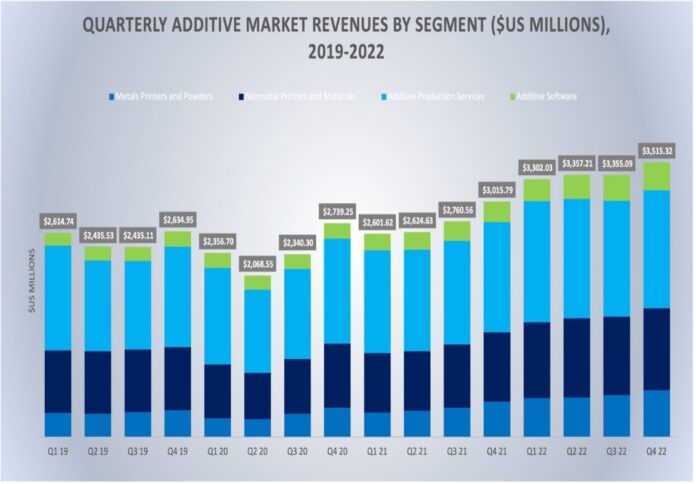
The additive manufacturing (AM) market is predicted to grow at a rapid pace, by roughly 23 per cent, to $13.5 billion (AUD 20.2 billion) in 2022, and is projected to be worth $25 billion (AUD 37 billion) by 2025, based on the most recent market statistics by SmarTech Analysis.
This number specifically includes AM hardware, materials, software and services, according to the report.
The metals segment climbed by 25 per cent to $4.9 billion (AUD 7.3 billion), while the polymers segment grew by 20 per cent to $7.3 billion (AUD 10.9 billion).
Software was seen as the fastest-growing segment, reaching $1.2 billion (AUD 1.8 billion) in 2022 while the AM services sector totalled $6 billion (AUD 9 billion).
SmarTech emphasised certain specific market developments that occurred in 2022, such as “super applications,” in which 3D printing was utilised to make huge to very large, high-value metal items that could not be made any other way.
The analysis found that since 2020, the usage of 3D printing in the medical sector has not been the important driving force of the overall industry’s development that it once was.
Defence and aerospace potential, on the other hand, have received increased attention, while medical implants are nearing maturity.
Scott Dunham, SmarTech Analysis EVP Research, commented, “Additive isn’t entirely immune from the global economic and geopolitical problems, but if there’s anything we’ve learned over the last three years, it’s that instability is generally a driver in the adoption of flexible advanced manufacturing innovations.”
Dunham added that there are diverse forecasts for the additive market in several industries for 2023, but when regarded as a whole, the expectation is that growth will continue.
“There are many things to be excited about in the additive industry over the next three years,” he concluded.
The most recent analysis includes not only annual data but also information for Q4 2022, which had the lowest year-over-year increase of any quarter in 2022 but reached a total expansion of more than 16 per cent compared to the same period in 2021.



















